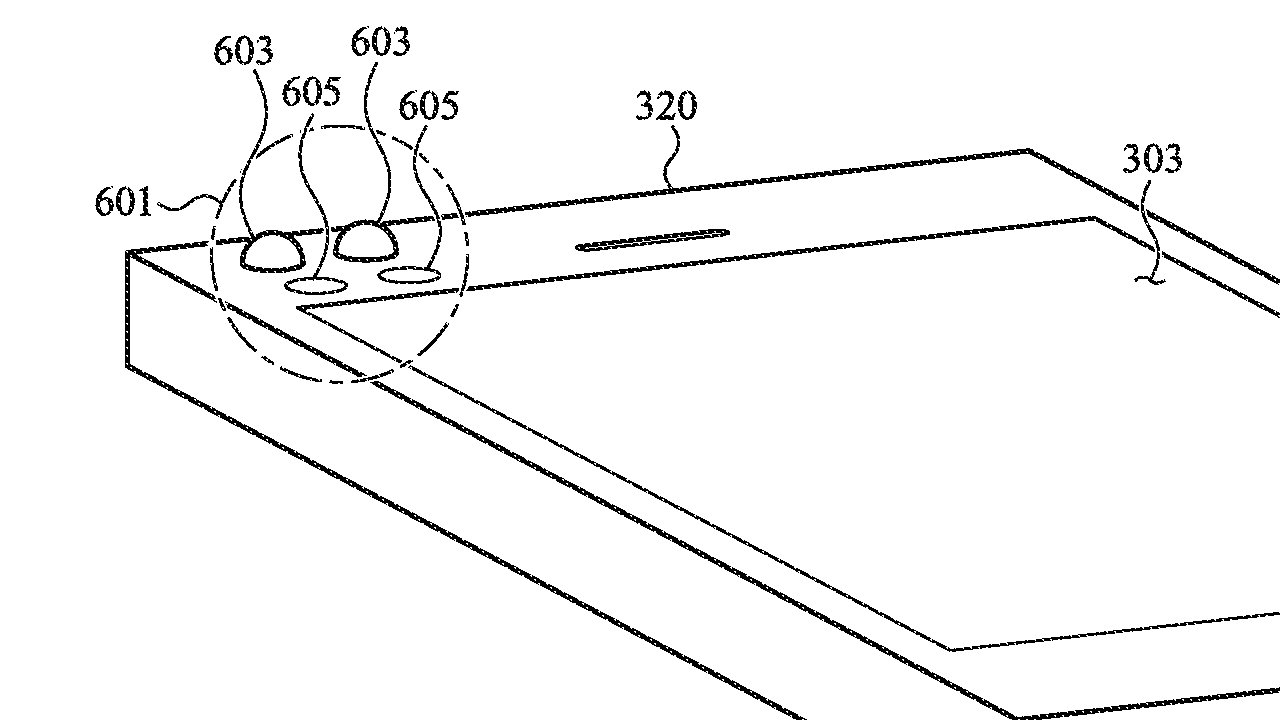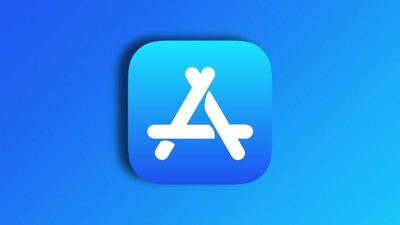Rather than having beeps or pop-up messages, notifications could some day alter the shape and texture of an iPhone, Apple Watch, or MacBook Pro, to give tactile alerts.
Imagine swiping on your MacBook Pro touchpad and noticing that one side of it suddenly feels a little rough. Or as you listen to music on AirPods Pro, suddenly one is ever so slightly pressing more against your ear.
If Apple's plan becomes a real product, this could be what happens when you get a notification. Rather than interrupt what you're listening to, or stopping you continuing to work on the MacBook Pro, you. get a subtle indication that your attention is needed when you've got a moment.
"Tactile outputs for input structures of electronic devices" is a newly-granted patent that proposes this kind of physical, tactile alert to replace conventional notifications.
"Conventional notifications are temporary alarms or signals, such as an audio or vibration alarm, or temporary displays of a message, such as a text message," says Apple. "If the user does not respond to the text message, the text message will disappear. Such conventional alerting schemes can be distracting to the user or to parties adjacent the user."
"In some cases, conventional notifications may be so distracting that a user turns off the notification capability, resulting in missed receipt of urgent or critical notifications," continues the patent. "Also, conventional notifications may be forgotten if not acknowledged during the temporary notification lifetime, as the notification frequently will get stored among a wealth of earlier notifications and data."
That's not a dig at macOS Big Sur and its piling up of overlapping notifications, nor of the way you now have to swipe or scroll very far on an Apple Watch to dismiss a similar pile of alerts. Although it could be.
"The tactile output may provide information to a user in a manner that is less intrusive and more tunable to user preferences than conventional methods for providing information to users of electronic devices," says the patent. "Because of the tactile nature, the tactile output may provide information that does not require a user's visual attention and/or does not require the electronic device to be within a user's field of view."
The example of an AirPod surface having a tiny protrusion, or your MacBook Pro trackpad gaining a slightly elevated, rough surface is easy to imagine. At points in this patent, Apple suggests something similar for the Apple Watch, though, which would have one side of the chassis change shape to show this kind of tactile alert.
If you're not likely to spend your day looking at the side of your Apple Watch, though, then you aren't going to be much more prone to noticing when the side away from your skin does anything. However, Apple suggests that as well as altering the protrusions, or the surface texture, this tactile feedback could move.
"[For example,] the tactile output is provided by activating and/or moving one or more tactile features of the electronic device," says the patent. "The tactile features may include one or more movable members, such as an input/output member of an input structure."
That feels close to what Apple already achieves with haptic feedback, especially in the Apple Watch. In this case, however, the idea is that the "tactile feature may move along a surface of the device, in or out of the surface of the device, rotate, precess, change shape, or some combination thereof."
Specific examples Apple gives in the patent include the AirPods one and the trackpad, but also keyboards where the keys themselves alter. It proposes a tactile notification plate that could be added to many different devices to bring this feature where it wasn't before.
Across some 26,000 words of patent description, Apple covers every conceivable permutation of this idea, including how a user will either be able to see such a surface change, or not. "In some embodiments, the tactile output may be tactilely perceptible but visually imperceptible, even while it is provided," it says.
"In certain embodiments, the tactile output may be visually imperceptible when the tactile output is not being provided," it continues.
So you might be able to see it, you might not, and if you do, it might be visible alongside a physical, tactile change, or it might not.
There is also the issue of just when a user feels, or sees, this notification. If it is on the side of the Apple Watch, or anywhere that is not "within a user's field of view," there's the question of how long it persists.
"For example, a conventional notification, such as an audio chime or ring, is typically known to the user and adjacent parties, and requires immediate action by the user to either turn-off the notification (e.g. silence a phone call) or answer the underlying content (e.g. answer the phone call)," says Apple.
"In contrast, a tactile output, such as a protrusion produced on a surface of a mobile phone, may be unnoticeable by adjacent parties and, if sustained, may allow the user to delay action," it continues.
So that MacBook Pro trackpad, or that tactile notification plate on the side of a device, could alter shape to signify a notification — and then stay altered until the user confirms they've seen it.
All of this means tactile notifications are less obtrusive, but no less effective, than regular alerts. Except none of this provides a full solution to the real issue of notifications where the problem is that we get too many of them.
Apple's patent does twice refer to the repetition of a notification, but it's specifically a repeat of the same one. Apple is proposing how one notification could convey its urgency, rather than how it would cope with five alerts a minute for the entire work day.
This patent is credited to two inventors, Per Haakan Linus Persson, and Steven J. Taylor. The latter has previously been granted a patent for haptic feedback on the Apple Pencil.
Stay on top of all Apple news right from your HomePod. Say, "Hey, Siri, play AppleInsider," and you'll get latest AppleInsider Podcast. Or ask your HomePod mini for "AppleInsider Daily" instead and you'll hear a fast update direct from our news team. And, if you're interested in Apple-centric home automation, say "Hey, Siri, play HomeKit Insider," and you'll be listening to our newest specialized podcast in moments.
 William Gallagher
William Gallagher











 Marko Zivkovic
Marko Zivkovic

 Amber Neely
Amber Neely

 Andrew Orr
Andrew Orr
 Christine McKee
Christine McKee









There are no Comments Here, Yet
Be "First!" to Reply on Our Forums ->